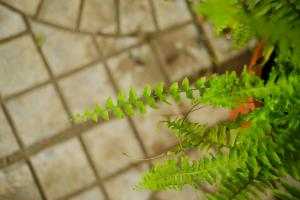Overview
Photosynthesis is the process by which green plants and other organisms convert light energy into chemical energy. This process occurs in the chloroplasts, which are found in the green parts of plants - mainly in the leaves. Chloroplasts contain chlorophyll, which absorbs light energy and uses it to power the synthesis of organic compounds, such as carbohydrates.
The Leaf: Home to Photosynthesis
As mentioned, the majority of photosynthesis in plants occurs in leaves. Specifically, it happens in the mesophyll cells, which are located within the leaf's interior. These cells contain chloroplasts, the organelles responsible for photosynthesis. The chloroplasts are packed with chlorophyll, which is the pigment that gives plants their green color.
The Anatomy of a Chloroplast
Chloroplasts have a complex structure, with several key components. The thylakoid membrane is found in the interior of the chloroplast and is responsible for the light-dependent reactions of photosynthesis. Additionally, the stroma is located outside of the thylakoid membrane and is where the light-independent reactions of photosynthesis occur. Finally, chloroplasts contain their own DNA, ribosomes, and enzymes to facilitate photosynthesis.
Photosynthesis Steps
The process of photosynthesis can be broken down into two stages: the light-dependent reactions and the light-independent reactions. In the light-dependent reactions, light energy is used to transfer electrons from water molecules to the chlorophyll. These electrons are then used to produce ATP and NADPH, which are essential for the light-independent reactions. In the light-independent reactions, CO2 is fixed into carbohydrate molecules, such as glucose.
Conclusion
Photosynthesis is one of the most important biological processes on Earth. It allows plants to convert light energy into chemical energy, which is then used to power their growth and development. The majority of photosynthesis occurs in the leaves of plants, specifically in the mesophyll cells that contain chloroplasts. By understanding the anatomy and function of chloroplasts, we can gain insight into the ecological and physiological roles of plants in our world.

 how many times do yo...
how many times do yo... how many planted tre...
how many planted tre... how many pine trees ...
how many pine trees ... how many pecan trees...
how many pecan trees... how many plants comp...
how many plants comp... how many plants can ...
how many plants can ... how many plants and ...
how many plants and ... how many pepper plan...
how many pepper plan...





























